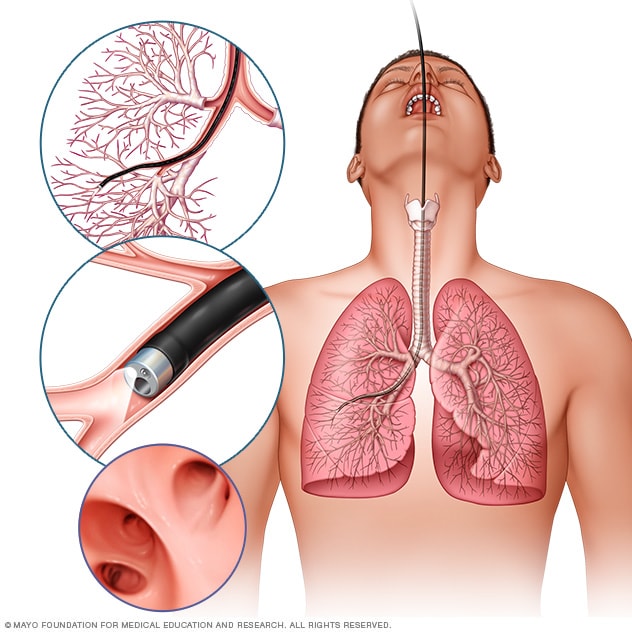
Bronchoscopy is a procedure that lets doctors look at the windpipe (trachea) and large airways of the lungs (bronchi). It’s usually performed by a doctor who specializes in lung disorders (a pulmonologist). A bronchoscope, which is a type of endoscope, is the main instrument being used during the procedure.
Some common reasons to perform bronchoscopy on a patient are a persistent cough, infection or something unusual seen on a chest X-ray or other test.
Purpose of bronchoscopy
A bronchoscopy is used to diagnose and/or treat certain lung problems. Below is a list of the main purposes of a bronchoscopy:- look for lung infections, diseases or cancer
- get biopsy samples to observe under a microscope
- help stage lung cancer
- see if a lung tumour can be removed by surgery
- find out why the patient is coughing up blood, and identify ways to control it
- remove foreign objects from the airway
- remove fluid, mucus or polyps
- drain pus that has collected (called an abscess) or a cyst in the lung
- evaluate the damage to the airway caused by trauma
Procedure
Click on the video below to see the full process of bronchoscopy. (Please note that there are graphic content in the video that involves blood, organs and more.)
Side Effects
Complications from bronchoscopy are uncommon and usually minor, although they are rarely severe.
Bleeding. Bleeding is more likely if a biopsy was taken. Usually, bleeding is minor and stops without treatment.
Collapsed lung. In rare cases, an airway may be injured during bronchoscopy. If the lung is punctured, air can collect in the space around the lung, which can cause the lung to collapse. Usually, this problem is easily treated, but it may require admission to the hospital.
Fever. Fever is relatively common after bronchoscopy but is not always a sign of infection. Treatment is generally not needed.
Reference
Lee, S. (n.d.). Bronchoscopy. Canadian Cancer Society. Retrieved May 19, 2022, from https://cancer.ca/en/treatments/tests-and-procedures/bronchoscopy
Mayo Foundation for Medical Education and Research. (2019, May 31). Bronchoscopy. Mayo Clinic. Retrieved May 19, 2022, from https://www.mayoclinic.org/tests-procedures/bronchoscopy/about/pac-20384746